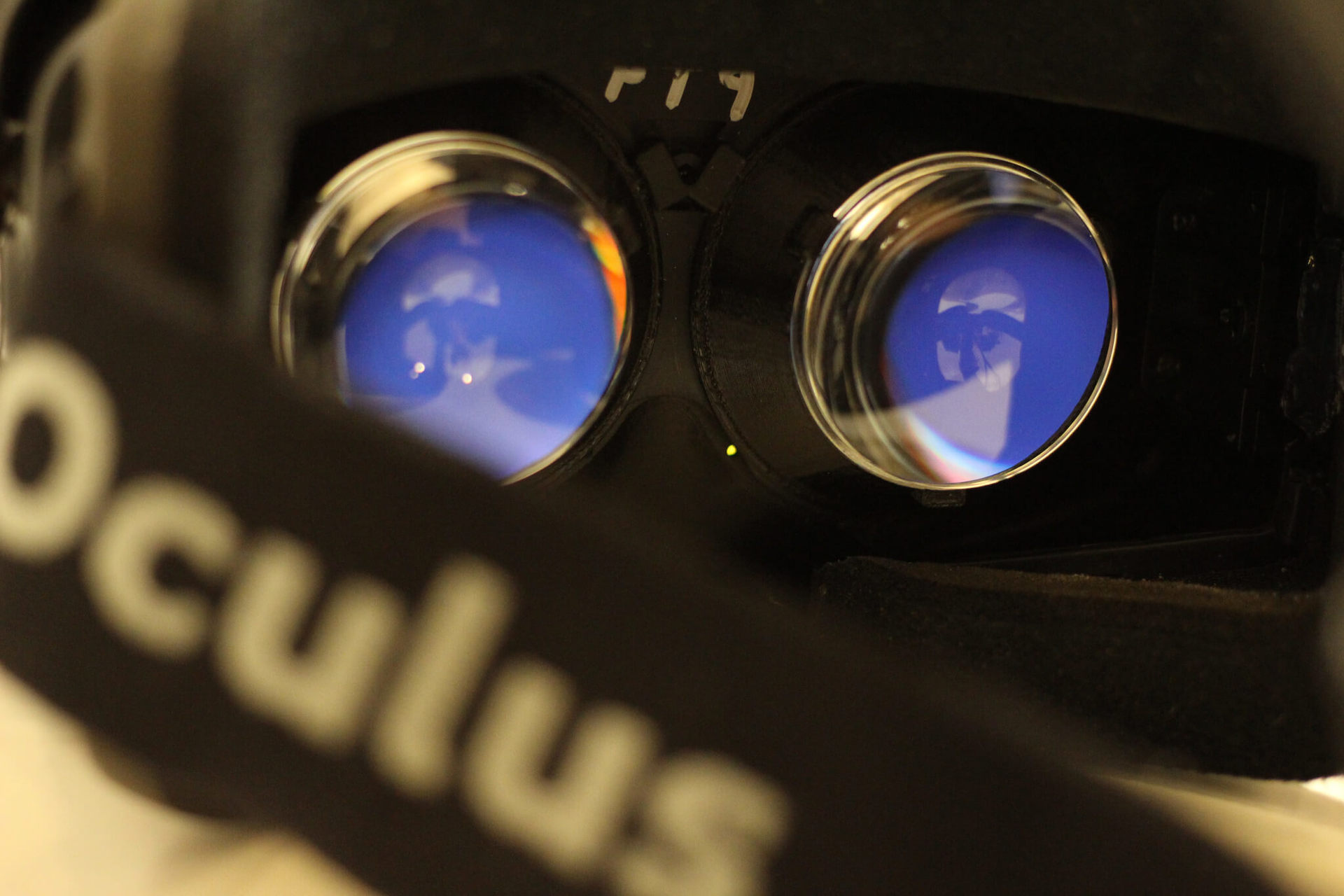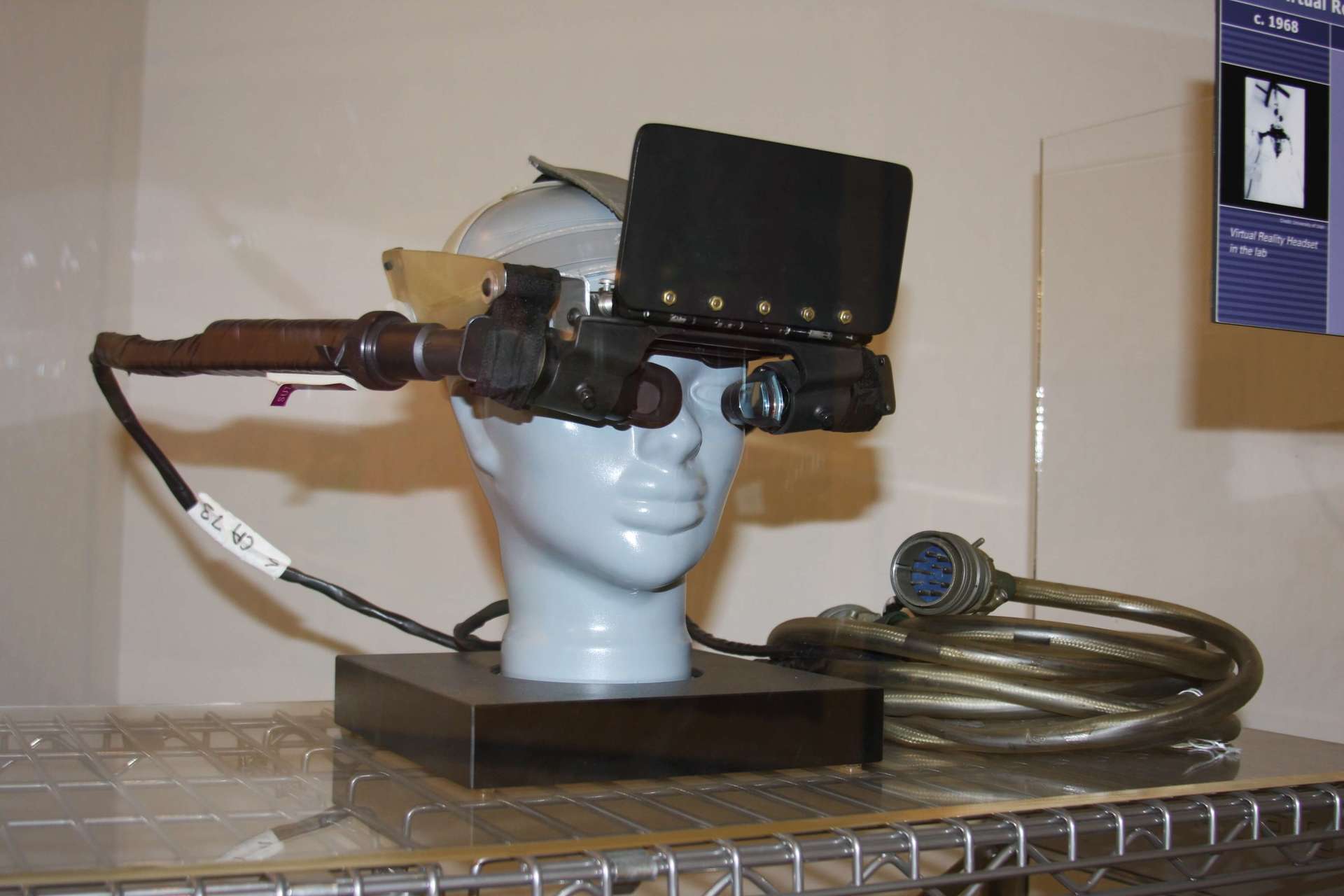The future of VR technology in the film industry

Photo of Maurizio Pesce CC
We at Audiomianie are trying to share on our blog the most interesting materials from the field of audio engineering and audio technology (and still doing digests ). For example, in one of the recent posts we understood how music and physiology are related, and in the 32nd release of the podcast “Sound” we talked about creating sound environments for films and TV shows. We also devoted one of the materials to the topic of home theaters, where we tried to answer the question of how they differ from their older brothers.
Today we would like to continue the theme of cinema and discuss one of the latest immersive technologies, which are rapidly gaining popularity in various fields of activity. This, as you may have guessed from the title, will be about virtual reality. What is VR technology, what is it for and whether it has a future - we will tell in this article.
2016 can be called the year of virtual reality (VR). All large corporations - Sony, Samsung, Google, Microsoft, HTC - are engaged in the development of virtual reality glasses and other devices that help them plunge into the virtual world with their heads.
')
This technology received a big impetus after Facebook bought the (then small) organization Oculus for $ 2 billion in 2014.
What is VR?
VR, or virtual reality, is a term used to describe the world created in a computer environment, with which a person can interact with the help of the senses: sight, hearing, touch.
Virtual reality glasses allow you to dive into this world - this is a device with a screen divided in half by a partition. For each eye, a special stereoscopic image is displayed, thanks to which a feeling of the extent of space and the relief of objects is created. For a more complete immersion in the virtual world, stereo is used - depending on where it comes from, you will hear it quieter or louder.

Photo of Pargon CC
You might think that this is a new technology, but the first virtual reality glasses were developed by Philco in 1961. They called their product Headsight, which was able to determine the position of the user's head and the direction of his gaze, but was rather cumbersome. Modern glasses are much more compact.
Applicability of technology
Now they are trying to use virtual reality in all entertainment, as well as scientific fields: cinema, games, training, experiments, etc.
For example, using VR glasses, you can experiment on a labonlaptop or see what the solar system looks like on materialworlds . Medical students learn more about surgery, performing operations in conditions as close as possible to real ones, or studying human anatomy.
In the entertainment field, things get much more complicated and confusing. What people are just not trying to do to plunge into the virtual world. In the gaming field, significant changes are now taking place when, instead of the usual keyboard of the mouse, special “futuristic” controllers appear.
In the film industry, VR is harder and harder. It is not so easy to apply technology that allows you to look around, to the cinema. Yes, it becomes more interesting, because you can see a lot more things, but there is a chance to miss the main thing - the meaning of the film.
In an ordinary movie there is no such problem. We are watching the film as the director wanted to show it. And we have no other option. With the use of VR, the director is not able to rivet the viewer's attention to a particular object or scene.
To understand what is going on, watch the short HELP film, shot by Justin Lin. There are too many points of interest in this picture. This alien monster, and people running away, and collapsing environment. To keep track of everything, you need to watch the video more than once, and this is extremely inconvenient, especially if something like this will go on large screens.
There is an opinion that with the advent of VR in the cinema, conventional films will fade into the background and there will not be much interest in them. The same words sounded when the movie began to produce in 3D-format. With the help of glasses created the effect of the fact that the image literally jumped out of the screen. Although cinema in 3D continues to be shot to this day, it is less popular compared to “classic” films.
A similar fate awaits and VR-movies. All because of the novelty and the still low popularity of technology, as well as the physical features of the VR-helmet - it is very heavy, and watch a two-hour film in it is extremely inconvenient. During this time, the viewer simply gets tired of moving his head and begins to look at one point. And if you do not look at everything around, then what is the meaning of virtual reality?
Another problem is the complexity of shooting. VR technology allows you to look at 360 degrees, so it’s not completely clear where to hide cameras, lights and the rest of the equipment.
David Pogue, in his article on Scientificamerican, shared his feelings about watching the first VR films:
Lost
“The debut animated film from the company Oculus Story Studio tells the story of how the robot is looking for its owner at night in the forest. To attract the viewer's attention, a firefly or a bird flies past him. Also sounds that set the direction of motion. Unfortunately, there is very little interactivity - all the main actions take place right in front of you, and if you turn in the other direction, you simply skip them. ”
Backwater
“Experimental VR-film from the car company Mini. They tried to tell a story, but it is somehow misunderstood. Actors are so far away that it’s impossible to see their faces, and you can't even move. If you start looking around, then again you miss something important. Honestly, without VR this story would look better. ”
In the end, Pog says that VR will most likely become a niche product, as happened with 3D printers or segways.
It should be
So what should happen in a VR movie to be fun to watch?
In 1903, the 12-minute film “The Great Train Robbery” was released , which tells how four thugs tried to rob the train, but were shot.
We paid special attention to him, because in his time he made a lot of noise. The story was told in the film. Before that, they showed scenes from everyday life, sports events or farces that were filmed on a stationary camera in one take.
For the first time in the Big Robbery, montage techniques, elementary special effects were used, and the film’s action took place in different places. In the final scene, Justin D. Barnes, one of the robbers, shoots a camera at close range. People who came to see the movie, it pretty scared.
For the VR industry, you need the same “Robbery”, which will push the film company to create films. Any story is interesting to listen to, if it is properly served, whether it is photo-realistic holograms or a puppet show. If the story is adapted to the style, then it will be interesting and exciting to watch.
Putting on glasses of virtual reality, a person plunges into the “other” world, therefore, such an installation is unacceptable, where the scene ends abruptly. Everything should be smooth, sudden movements of the camera disorient the viewer or, even worse, harm his health. VR technology creates an effect of presence. This feature should be used to the maximum.
Let's move on to examples and analyze films in which such an approach would be interesting.
"Jurassic Park"
Remember the scene where Tyrannosaurus attacks the car with the children, and the main character tries to distract him with the signal light. Now imagine that you are watching all this from the outside. You try to scream, distract the dinosaur towards yourself and ... It turns and goes at you. Of course, in order not to deviate from the main plot of the film, a dinosaur would eventually still go to the main character, but it would be nice and exciting to feel like a part of the movie.
And for those who were scared and did not try to distract the dinosaur, there would be another scene where the lizard immediately goes after the fire.
"West Wing"
In this series, there is a scene that was filmed in one take and lasts three minutes. People talk among themselves, go along the corridor, descend and climb stairs. The operator deliberately stops to go to one group and listen to their dialogue, or, on the contrary, accelerates in order to catch up with another.
As a result, it seems that the viewer is among them and hears all the conversations. It is also worth noting the work with sound, despite the fact that actors are changing in the frame, the dialogues of other people are still audible - they do not fall silent. And here is the scene from the series.
"Start"
A movie that is perfect for the VR format. It would be interesting to see some scenes from other angles, as well as on behalf of the main characters.
Remember the moment where Cobb's subconscious attacks on Ariadne - his deceased wife Mol.
It would be interesting to see the scene, from the face of Maul, as she attacks them. In the film, Cobb warns Ariadne that the subconscious mind may attack them. Imagine that at this moment he would have looked at the viewer, thereby warning him about the threat.
Or remember the moment where Arthur runs through the revolving room. We see this scene only from the outside, but it would be interesting to see it on behalf of Arthur.
This film is full of those moments that I would like to see in VR, but they can be listed endlessly. Therefore, let's summarize what should be present in any VR film, and what more attention should be paid to:
- Allow the viewer to feel part of the film (an example of the "Jurassic Park");
- To allow the viewer to watch the scene from different angles;
- Allow the viewer to be one of the main characters (see the scene from the first person);
- To affect more of the viewer's sense organs, thereby immersing him more strongly into the atmosphere of the film (use costumes, gloves that complement virtual reality).
It is necessary to work out every scene, transitions and mount everything so that there are no noticeable "seams". Behind this industry is a huge future, and how it will develop depends on the desires of the viewer and the technical solutions of the film companies.
PS Interesting materials from our blog:
- "We look at home": Dolby Atmos and his friends
- Home Cinema: An Alternative to the Big Cinema Screen
- We build a home theater: acoustic treatment of the room
- We build a home theater: the choice of acoustics, its installation and configuration
- New era in home cinema or is it worth waiting for miracles from 4K and UHD-Blu-ray?
- Choosing a projection screen for 4K video: a place for a small pixel
Source: https://habr.com/ru/post/396237/
All Articles